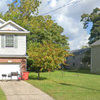misLEEDing
energy_rater_la
11 years ago
Across the United States, the Green Building Council has helped thousands of developers win tax breaks and grants, charge higher rents, exceed local building restrictions and get expedited permitting by certifying them as "green" under a system that often rewards minor, low-cost steps that have little or no proven environmental benefit, a USA TODAY analysis has found.
http://www.usatoday.com/story/news/nation/2012/10/24/green-building-leed-certification/1650517/




User
energy_rater_laOriginal Author
Related Professionals
Ann Arbor Architects & Building Designers · Henderson Architects & Building Designers · Oak Grove Design-Build Firms · Hainesport Home Builders · Riverbank Home Builders · Stanford Home Builders · Canandaigua General Contractors · Columbus General Contractors · Leominster General Contractors · New Braunfels General Contractors · Plano General Contractors · Waianae General Contractors · Waipahu General Contractors · Waldorf General Contractors · West Mifflin General ContractorsUser
User
energy_rater_laOriginal Author
kelhuck
worthy
david_cary
brickeyee
energy_rater_laOriginal Author
phoggie
david_cary
bevangel_i_h8_h0uzz
worthy
energy_rater_laOriginal Author
brickeyee
energy_rater_laOriginal Author
david_cary
Annie Deighnaugh
User
phoggie
brickeyee